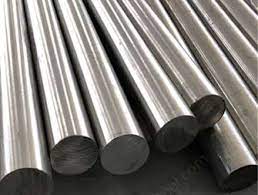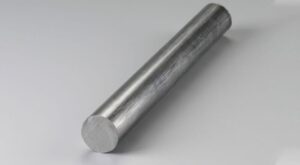In the world of metallurgy and materials engineering, stainless steel is a name that resonates with durability, corrosion resistance, and versatility. One particular stainless steel alloy that stands out is the 316 stainless steel round bar. In this comprehensive guide, we’ll delve into the properties and applications of this remarkable material, exploring its chemical composition, mechanical characteristics, and the wide array of industries where it finds valuable use.
Introduction to 316 Stainless Steel
What is 316 Stainless Steel?
316 stainless steel, often referred to as marine-grade stainless steel, is a type of austenitic stainless steel alloy. It is renowned for its exceptional corrosion resistance, making it highly suitable for various demanding environments. The “316” designation signifies its composition, which includes 16-18% chromium, 10-14% nickel, 2-3% molybdenum, and other trace elements.
Key Properties of 316 Stainless Steel
1. Corrosion Resistance
One of the standout features of 316 stainless steel is its resistance to corrosion. This makes it an ideal choice for applications where exposure to moisture, saltwater, or harsh chemicals is a concern. It is widely used in marine and chemical processing industries.
2. High Temperature Resistance
316 stainless steel maintains its strength and corrosion resistance at elevated temperatures. This property is crucial in applications such as industrial furnaces and exhaust systems.
3. Strength and Durability
With a high tensile strength and excellent toughness, 316 stainless steel is renowned for its durability. It can withstand heavy loads and extreme conditions, making it a popular choice in construction and structural applications.
4. Ease of Fabrication
This alloy is known for its ease of fabrication, including welding and forming. This versatility contributes to its popularity in various industries.
Applications of 316 Stainless Steel Round Bar
Construction and Architecture
In the construction and architectural sectors, 316 stainless steel round bars find extensive use in structural components, handrails, and decorative elements. The material’s combination of strength, corrosion resistance, and aesthetic appeal makes it a preferred choice for both indoor and outdoor applications.
Marine Industry
As its nickname suggests, marine-grade stainless steel is a staple in the shipbuilding and maritime industries. It is employed in boat fittings, marine hardware, and equipment exposed to saltwater and the harsh marine environment.
Chemical Processing
Chemical plants and laboratories rely on 316 stainless steel for its resistance to corrosive chemicals. It is used in the construction of tanks, pipes, valves, and pumps handling various acids and corrosive substances.
Food and Beverage Industry
316 stainless steel is considered food-grade, making it a safe choice for food processing equipment such as tanks, conveyors, and storage containers. Its corrosion resistance ensures that it won’t react with food products.
Pharmaceuticals
In the pharmaceutical industry, cleanliness and resistance to corrosion are paramount. 316 stainless steel is used for equipment like pharmaceutical reactors, storage vessels, and piping systems, where product purity is essential.
Automotive and Aerospace
The automotive and aerospace sectors benefit from the lightweight yet strong nature of 316 stainless steel. It is utilized in exhaust systems, aircraft components, and various engine parts.
Medical Devices
Medical instruments and devices, which require a combination of biocompatibility and corrosion resistance, often incorporate 316 stainless steel. Surgical instruments, orthopedic implants, and dental tools are prime examples.
Oil and Gas
In the oil and gas industry, 316 stainless steel is used in downhole equipment, pipelines, and offshore platforms. Its resistance to corrosion in harsh environments is invaluable.
Frequently Asked Questions (FAQ)
1. Is 316 stainless steel magnetic?
No, 316 stainless steel is typically non-magnetic. This property is due to its austenitic crystalline structure, which is different from the magnetic properties of ferritic or martensitic stainless steel.
2. What is the difference between 316 and 304 stainless steel?
Both 316 and 304 stainless steel are austenitic alloys, but 316 contains molybdenum, which enhances its corrosion resistance. As a result, 316 is more suitable for marine and chemical environments, whereas 304 is commonly used in applications where corrosion resistance is less critical.
3. Can 316 stainless steel be used for outdoor applications?
Yes, 316 stainless steel is an excellent choice for outdoor applications. Its resistance to corrosion, even in saltwater environments, makes it ideal for structures, handrails, and decorative elements exposed to the elements.
4. How does 316 stainless steel compare to 316L?
316L stainless steel is a low-carbon version of 316, which provides even better corrosion resistance in certain environments, such as welding applications. It is often preferred when welding is involved to prevent carbide precipitation and subsequent corrosion.
In conclusion, 316 stainless steel round bars are a versatile and dependable material with a wide range of applications across various industries. Its remarkable properties, including corrosion resistance, strength, and ease of fabrication, make it an indispensable choice in demanding environments where durability is paramount. Whether in marine, construction, or pharmaceutical applications, 316 stainless steel continues to prove its mettle as a material of choice.


